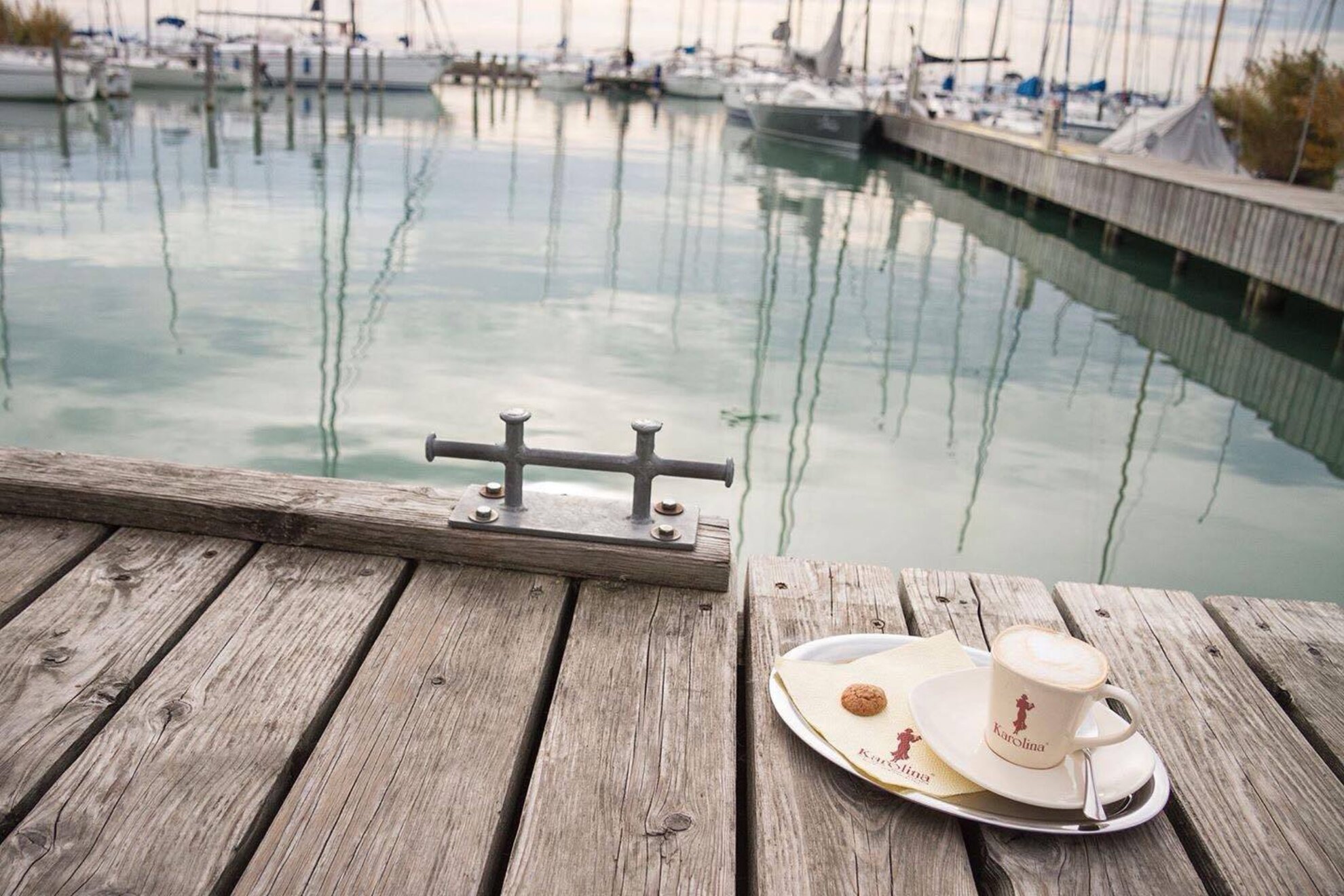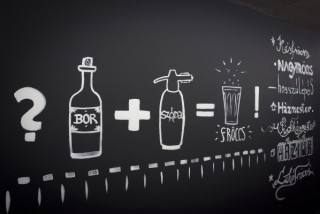Putting a little distance between us and the capital and making use of the warmness the autumn sun gave us during the weekend, we visited the Badacsony, the wine region north of Lake Balaton. Our mission? To find the best wineries, to sleep at the most exquisite accommodations, and to taste the most characteristic wines of the region. Accomplished? Read on, and see it for yourself!
We left Budapest at 2 PM on Friday. As it’s October we weren’t obstructed by any heavy traffic heading for Lake Balaton, and after two and a half hours we arrived at the foot of Koporsó-hegy (Mt. Casket). Our first stop was the 2Ha estate on the slopes of Szent György-hegy (Mt. St. George). Csaba Török, the vintner who runs the winery single-handedly, greeted us and guided us all over the place.
The harvest had just been finished, so we could still see in the barrels how the fermenting grapes turn into wine.
Csaba Török is not far from breaking down taboos in order to produce quality wine. He wants to create the best white and red wines, at all costs. Many think it’s a controversial topic whether red wines can be produced in the Badacsony wine region, but he vetoes this kind of thinking supported by the fact that as early as the 19th century about half of the plantations were used for blue grapes, which disappeared due to the phylloxera and the simpler, more large-scale practices of the past 40 years. The clone of the sangiovese variety grown here is used for the Brunello of Tuscany, which is one of the most well-known red wines in the world. 2Ha makes its Tabunello red wines from the same grapes.The wines we tasted: Pinot Gris 2009, Olaszrizling 2009, Cabernet 2009, Tabunello 2009
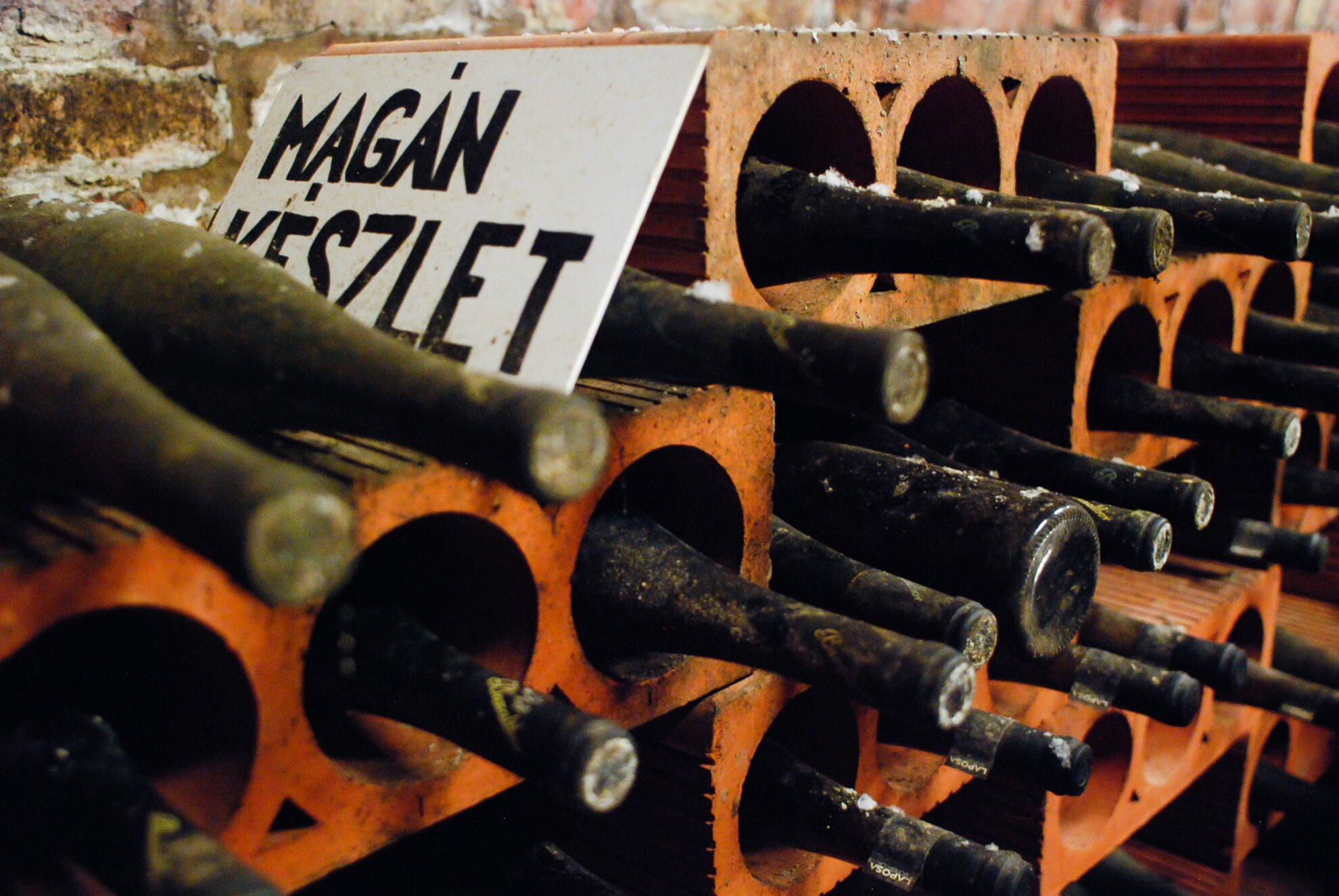
Next up was unsurprisingly a wine hotel, the recently opened Hotel Bonvino. It was designed by the same Geppetto Belsőépítész Iroda (Geppetto Interior Design), who designed the Baldaszti’s in Budapest. As for design the hotel was impressive: we could see the well-thought-out concept, and were especially happy to find that the Hungarian style didn’t ended up being the usual cliché but rather the creative interpretation and style prevailed. The two wings of the hotel represent the modern and the rustic-folk-art styles. The modern section makes use of the elements related to wine-making of the wooden barrel and the reductive type as the shiny metallic surfaces meet vivid colors. Our favorites, however, were the rustic-folk-art rooms which reminded us of János Vitéz, the famous Hungarian poem by Sándor Petőfi, with their countryside-ish mood, and wooden and floral decorations.
Dining is buffet-style in the wine hotel, but it’s needless to say that people don’t usually come here to eat, and we ourselves were more inclined to take a look at the wine menu. Unfortunately, though, the wine experts of the hotel were out during our stay, so we had to suffice with the unsatisfactory information we could get. Another disappointment was the wine menu, as apart from the well-known, classic wines there was no trace of the produces of smaller cellars, what’s more, the wines offered were procured from a sole supplier. Openness and thinking outside the box were unsuccessful, as the much needed theme of wines in a wine hotel was nowhere to be found. The wine bar had the same wines to offer and the same “expertise” to help us out, so we were left with contemplating on the hanging wine bottles and witty drawings about Badacsony, rather than drinking good wines. The hotel is equipped with a fine wellness section, so those at least a little keen on spending some time in saunas or Jacuzzis will be happy choosing Bonvino. If you want to know more about the hotel, click here.Finding an ideal place to have lunch is not at all easy in Badacsony – or so we realized at noon on Saturday as we were heading out to find novel gastronomic experiences. In summer, of course, the smells of hake and langosh emanating from little dining shacks are ubiquitous, but if you want to eat some local specialty, you’re in for some research. We had no other choice but to test Borbarátok Restaurant, which was the only place we were recommended at this off-season time. The long menu itself made us suspicious enough. It included chicken, beef stew, venison, and whatnot. There was nothing we couldn’t find but the good quality of the dishes. The overly salted food and the principle quantity comes before quality were prevalent, not to mention how much we paid for all this (1 dl of peach juice cost 220 HUF).
After lunch we could give in to our curiosity of wines once again. Laposa Winery was our destination, which was voted Building of the Year on an international architectural competition held by ArchDaily in 2010. Bence Laposa was our guide himself as we took a tour in the 21st centrury complex, and saw what stages grapes go through before finally becoming wine. The Laposa brand has set the restoring of the prestige of the Badacsony wine region as its aim. Their white wines of extraordinary flavors are produced in matching environment, wineries that merge the traditions and the most modern technological advances. We tasted the product of the latest harvest, and based on what we felt we can be hopeful about the Laposa bottles due in shops later this year. Do you want to know more about them? Look here.
Above the winery there is a hotel belonging to it. At first glance we didn’t think what a drag it would be to walk up to it along the vines but after some steps we had to realize that the Badacsony slopes are not for the faint-hearted. During the climb it’s advisable to take some rest and look back because the look of the lake and the autumn sunrays are indeed a breathtaking sight. Having worked off the lunch, we arrived to the top of the hill, to Hotel Laposa. The waiter was exceptionally complaisant at serving us with the Laposa wines, local cheese, and mangalitsa plate. Sadly, we had to make a mental note of the fact that we were sitting by ourselves at one of the most beautiful places of the world.The wines we tasted: Nagy-Somlói Juhfark 2008, Nagy-Somlói Olaszrizling 2008, Badacsonyi Kéknyelű 2008, Badacsonyi Olaszrizling 2008, Badacsonyi Szürkebarát 2008, Riesling 2008, Nagy-somlói Hárslevelű 2008
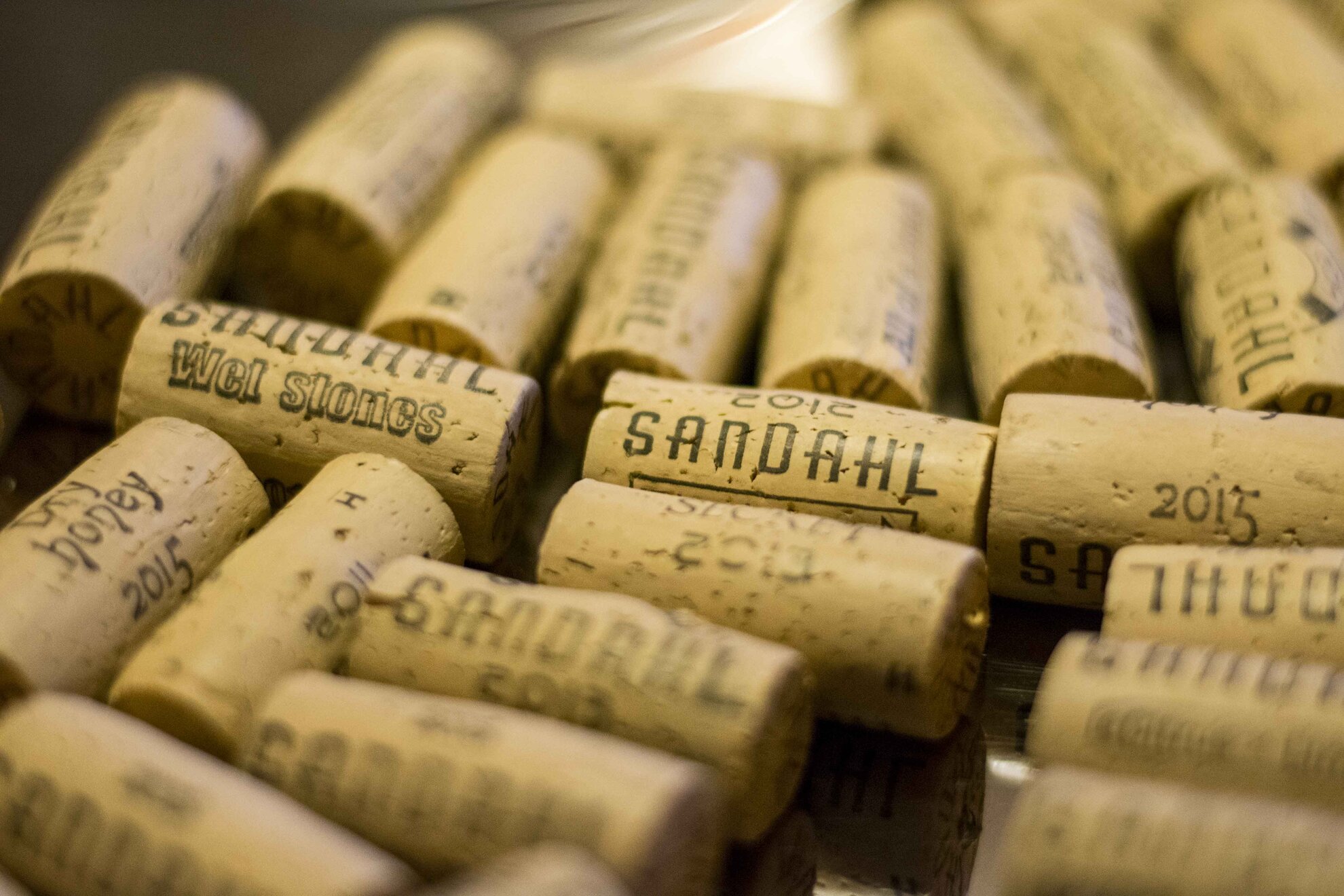
After sunset in the twilight we tried to stumble down the aforementioned slope, which was not a bit easier downwards. We could’ve felt this way due to the appropriate amount of wine drunk or the difficulty of the terrain. Anyways, we drew the same conclusion as before: wine-making is a tough job. Lucky for us that we had to proceed no further than the middle of the slope as our next stop was the Villa Sandahl in the vicinity. The Swedish Sandahl brothers discovered the values of Badacsony in 2004, and didn’t waste any time purchasing the best slopes. Their wines are not so well-known in Hungary as of now, with their products being sold only in restaurants such as Gundel and Costes. Mr. Sandahl presented the processes involved in winemaking with surgical precision, and in their homes he and his wife told us about what the hell they are doing in Hungary as Swedish pensioners.
The Swedish Sandahl brothers discovered the values of Badacsony in 2004, and didn’t waste any time purchasing the best slopes. The advisor to Villa Sandahl is one of the leading wine producers of the Alsace wine region, with whom the brothers have developed winemaking processes like the ones employed with the Alsace grand cru wines. Thus, the superb grape growing of Badacsony meets the wonderful French wine-making. Villa Sandahl has been making two different kinds of Rhine Riesling since the 2006 vintage.
Villa Sandahl does not have an own winery, however, it has recently signed a long-term contract with Bence Laposa, according to which they are going to cooperate in development, too. This winery is located close to the plantations of Villa Sandahl, and is equipped with everything a vintner can wish for. Further information on Sandahl is here.The wines we tasted: The Stamp 2010, Rajnai Riesling 2008
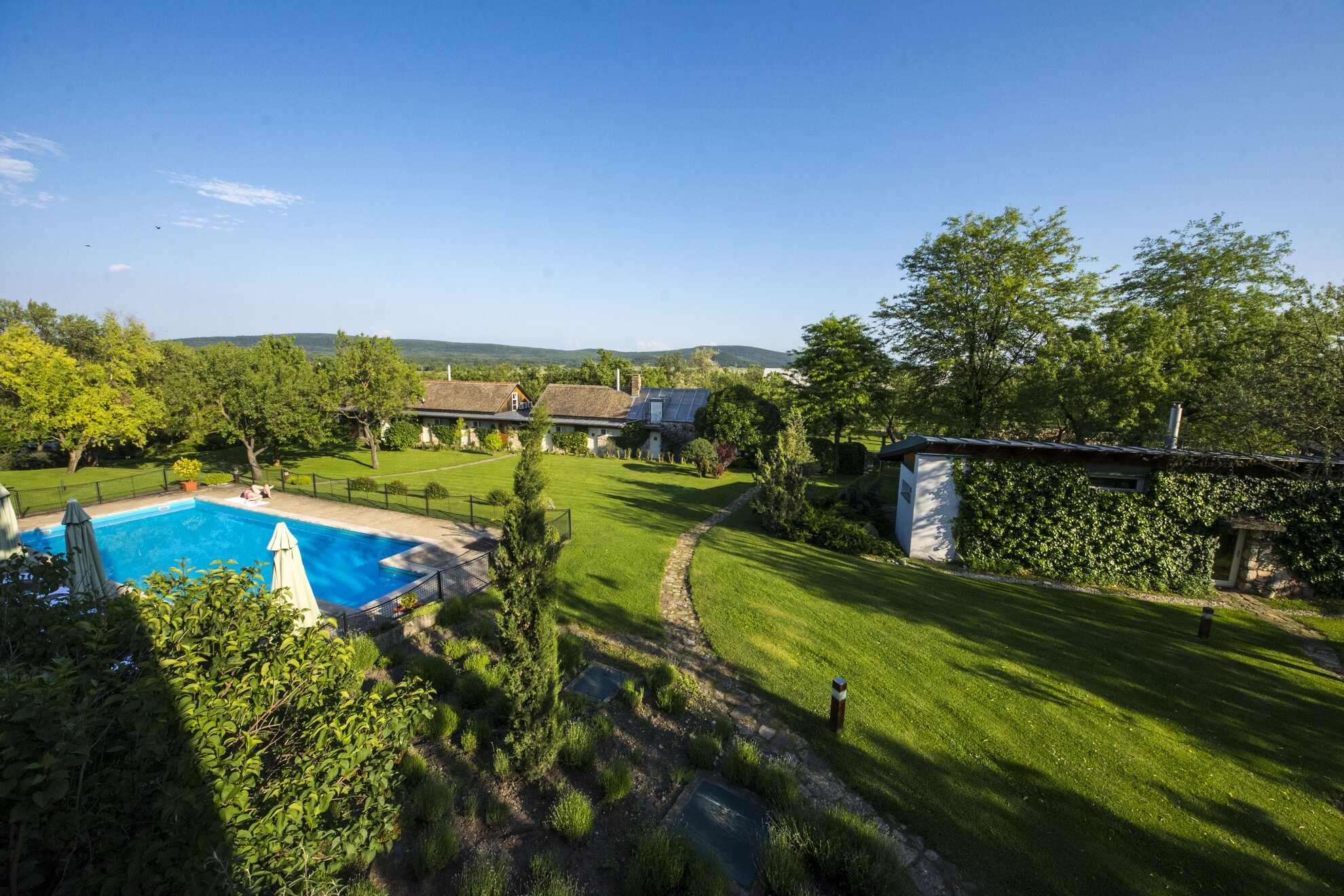
At dinnertime we had to explore the region for catering facilities once more. Our choice this time was the restaurant of Szeremley Winery, where the essence of the cuisine is both the traditional Hungarian dishes of Balaton and the greatest wines of the region. We left the place with a flawless culinary experience, although its price made just as much impact on our savings.
Next morning we bid goodbye to Badacsony, setting out in the direction of Káli-medence (Káli Basin), straight to Káptalantóti. But what exactly is hidden in this strangely-named village? Not less than the wonderful Sunday biomarket of the region. The edge of the village was pretty crowded with parking cars, and the same bustling could be experienced in the market, too. The market is full of extraordinary goods, you can buy all of the home-made products of the region. Cheese, jams, syrups, bacon, sausages, lavender, “breadlangosh”, strudel, potato scones, and everything that can whet you appetite. We had “hurka” (sausage made of organ meat) with mixed pickles for breakfast in the local meat buffet under the trellis.
Leaving Káptalantóti we set out for Köveskál, which is probably the most evocative village in the basin with its tiny little cottages reflecting the local traditions. Köveskál offers great possibilities of accommodation. One of them being Káli Art Inn with its beautiful big garden and pool. Another one, where we decided to have lunch is Kővirág Restaurant and Pension. The restaurant bears the rustic marks of the region, its menu includes local dishes, mainly catfish and poultry prepared with a novel approach, in modern ways. This gastronomic experience was far the best among those of the weekend with its professional service and solid concept, not mention the fact that the price-value relation was absolutely acceptable, too.
Our next and final stop was Karolina Café and Cocktail Bar in Balatonfüred. On the way to Balatonfüred it’s advisable to drive through the villages of the basin, as the region is beautiful beyond imagination with its well-tended grape plantations and lovely villages with small churches. You might want to take a quick glance at the Nagyvázsony Castle.
In Balatonfüred we were greeted by the usual sunny weather, and the sight of casually meandering families, couples and companies of friends. We were lucky enough to arrive at the Karolina Café just when a table got free. We had a spongecake Karolina-style, took a last sip from our coffee, bid farewell to the autumn lake, and spent the next one and a half hour to get back to Budapest.
And what’s the consequence to be drawn from our tour? First, we could get to know the possibilities and wonders offered by the region north of Lake Balaton. It’s indeed one of Hungary’s most beautiful regions, and it wouldn’t be exaggeration in the least to say it’s on the same level with Provance. Those unbelieving should definitely go on the same trip we did. Moreover, the air and sight of Lake Balaton is capable of recharging the traveler escaping from the bustling city with so much energy, that returning to the workplace will be a lot more pleasant.
The Badacsony wine region is full of so many talented, promising vintners, that visiting them and tasting their finest wines is definitely worth the time. We hope that the places we visited will get over their initial problems, and more people will get to know this region brimming with countless treasures only a couple of hours far from the capital, because we did love Badacsony…
